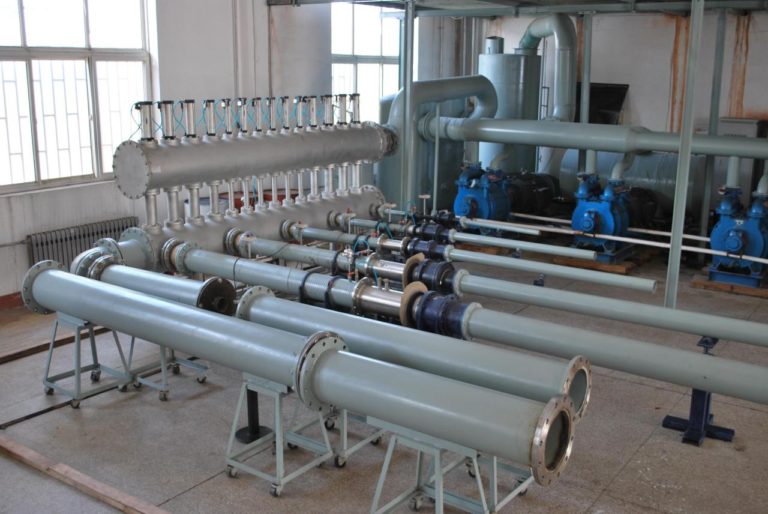Mass flow meters are critical instruments in many industries, particularly for applications where precise measurement of the mass flow rate of liquids and gases is required. To ensure accurate performance, these meters need to be regularly calibrated. Calibration is the process of comparing the meter’s readings to known standards to ensure its accuracy. Several methods are employed to calibrate mass flow meters, each suited to different types of fluids and operating conditions. This article explores the most common calibration methods for mass flow meters, detailing their principles and application.
1. Static Method (Gravimetric Calibration)
The static method, often referred to as the gravimetric method, is one of the most straightforward approaches for calibrating mass flow meters. This method involves measuring the mass of fluid passing through the meter over a given period and comparing it to the meter’s recorded mass flow rate.
How It Works: In this method, a container or vessel with a known weight (e.g., a balance or scale) is used. The fluid is allowed to flow through the mass flow meter, and its mass is measured by the container. The mass flow rate can then be calculated based on the mass of the fluid collected and the duration of the flow.
Applications:
- This method is commonly used for liquids and low-viscosity fluids.
- It is highly accurate for calibration in controlled environments.
Advantages:
- Simple and direct.
- Provides high precision, especially for small flow rates.
Disadvantages:
- Requires a controlled environment to minimize errors due to temperature or other environmental factors.
- Not suitable for high-flow rates, as the process of collecting and weighing large volumes of fluid can be cumbersome.

2. Dynamic Method (Volumetric Calibration)
The dynamic method, or volumetric method, involves measuring the volume of fluid passing through the mass flow meter within a known time frame. Once the volume is determined, it can be converted to mass using the fluid’s density.
How It Works: In this method, the flow meter’s volumetric output is recorded, and the fluid’s density (which depends on temperature and pressure) is used to convert this volumetric flow rate into mass flow rate. The standard practice often involves using a calibration device with a known volume, such as a volumetric tank or a rotating piston.
Applications:
- Suitable for both liquids and gases, though it is more commonly used for liquids.
- Often employed in field conditions for larger flow rates.
Advantages:
- Allows calibration over a broad range of flow rates.
- Relatively easy to implement in the field.
Disadvantages:
- Requires accurate density measurements.
- It can be difficult to achieve the same precision as the static method, especially for gases, where density changes with temperature and pressure.
3. Comparison Method (Direct Comparison with a Standard Meter)
The comparison method involves directly comparing the readings of the mass flow meter being calibrated with those of a reference flow meter that is already calibrated and certified. This reference meter is typically known to provide accurate mass flow measurements.
How It Works: The flow meter under test is connected in parallel with the reference meter in a test loop. Fluid is passed through both meters, and their readings are compared over a range of flow rates. Any discrepancy between the two meters’ readings is used to determine the calibration adjustment required for the test meter.
Applications:
- Widely used in industries where portability is important, such as in on-site flow calibration.
- Suitable for both liquids and gases.
Advantages:
- Ideal for field calibration when transporting the device to a laboratory is not feasible.
- Can be performed with various flow conditions to simulate real-world usage.
Disadvantages:
- Relies heavily on the accuracy and condition of the reference meter.
- Calibration is limited by the flow range of the reference meter.

4. Loop Method (Closed-Loop Calibration)
The loop method is an advanced calibration approach that involves creating a closed-loop flow system in which the mass flow meter is placed in a recirculating flow loop. This method is used to simulate a continuous flow of fluid in a controlled environment.
How It Works: In a loop setup, the fluid is pumped through the flow meter, measured, and then recirculated back into the system. The system may use a reference flow meter or pressure and temperature sensors to determine the mass flow rate. The meter’s performance is assessed by comparing its readings to the known flow rate in the loop.
Applications:
- Mostly used in laboratory settings or for highly accurate industrial processes.
- Suitable for high-flow conditions.
Advantages:
- Ensures high precision and repeatability in calibration.
- Allows for thorough testing across a wide range of flow rates.
Disadvantages:
- Requires complex setups and a controlled environment.
- More expensive and time-consuming compared to simpler methods.
5. Liquid Standard Flow Meter Calibration
When calibrating mass flow meters used for liquid measurement, liquid standard flow meters are sometimes employed. These devices have known and highly accurate flow rates that can be compared against the readings of the meter under test.
How It Works: A liquid standard flow meter, such as a piston prover or positive displacement meter, is used as the reference. The test flow meter is connected in series with the standard flow meter, and the liquid’s flow is measured by both devices. Differences between the measurements are analyzed to adjust the mass flow meter accordingly.
Applications:
- Common in industries dealing with liquids, such as water treatment, oil and gas, and chemical processing.
Advantages:
- Provides high accuracy for liquid flow meters.
- Suitable for both high and low flow rates.
Disadvantages:
- Calibration with liquid standards can be costly.
- May not be suitable for gases or mixed-phase flows.

6. Gas Standard Flow Meter Calibration
For gas flow meters, the calibration method is similar, but it often involves the use of a gas standard flow meter. Gases have varying densities based on temperature, pressure, and composition, which must be carefully accounted for during calibration.
How It Works: A gas standard flow meter, such as a turbine or thermal mass flow meter with known accuracy, is used to compare the mass flow measurements. These meters are calibrated under standardized conditions (such as a specific temperature and pressure), and the readings from the test meter are compared against the standard meter’s readings.
Applications:
- Common in industries dealing with natural gas, air, and other industrial gases.
Advantages:
- Can be used for a wide range of gas types and flow conditions.
- Provides high accuracy for calibrated gas meters.
Disadvantages:
- Gas calibration requires precise control of environmental conditions like temperature and pressure.
- Not as simple as liquid calibration due to gas compressibility and flow variability.

Conclusion
Calibrating mass flow meters is a critical process for ensuring measurement accuracy in various industries. The choice of calibration method depends on the type of fluid (liquid or gas), the flow range, and the environmental conditions. Each method offers distinct advantages and limitations, and selecting the right one is key to achieving precise flow measurements. While methods like the static method provide high precision in controlled environments, dynamic and comparison methods are more practical for field applications. Advanced methods like loop calibration and the use of liquid and gas standard flow meters provide high accuracy and reliability for industrial applications.
Regular calibration ensures that mass flow meters continue to provide accurate measurements, which are essential for optimizing process control, improving efficiency, and ensuring compliance with industry standards.
